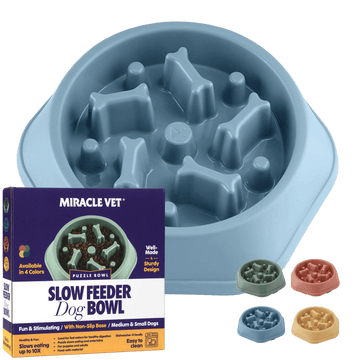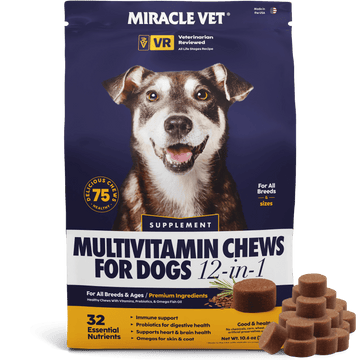According to the Arthritis Foundation 1 in 5 dogs will suffer with canine arthritis in their lifetime, this is most common in older dogs but it is important as a dog owner to be considerate of their changing needs if they develop arthritis.
Canine arthritis is when a dogs joints become inflamed, this causes discomfort, pain and stiffness. If your dog has developed arthritis then the cartilage at the joints (hip joint, shoulder joints etc) can become damaged and rough causing the joints to run together when moving, this causes pain as your dog moves.
This rubbing motion can damage the joint even more, causing more friction which can make the condition degenerative.
Could my Dog Have Arthritis?
If your dog has developed canine arthritis then you will notice some common signs.
- Difficulty getting up and down
- Walking stiffly
- Doesn’t want to use stairs
- Doesn’t jump as much - possibly no longer jumps out of your car
- Exhibits signs of lameness
- Stiff, swollen, or sore joints
- Sensitive to touch
- Loss of stamina - increase in tiredness
- Licking, biting at joints or legs
- Unexpected aggression towards other dogs or people
One of more of these signs could mean that your dog has developed arthritis, each sign signifies some sort of pain so even if it isn’t arthritis you should get your dog examined by your vet.
Treatment for Canine Arthritis
Once a vet has diagnosed arthritis they will prepare a plan to help care for, and manage your dogs pain.
Depending on your dog, the breed, their weight and age your vet will devise a care plan which may involved any of the following:
- Anti inflammatory medication (NSAIDs)*
- Vitamins/supplements to improve joint health
- Weight loss plan
- Changes to dog food
- Alternative therapy such as acupuncture or hydrotherapy
* Do not give your dog human NSAIDs such as ibuprofen these are toxic to dogs, only use an anti inflammatory specifically prescribed by your vet.
How To Help Your Arthritic Dog Exercise
When your dog has arthritis you may feel you are being supportive by not exercising them as much. However not exercising can create more risks for your dog, therefore you need to modify their exercise to manage the pain but keep them healthy.
If your dog is overweight then the extra weight will put more pressure on the joints causing more pain. Keeping your dogs weight within a healthy normal range is very important.
Exercise will help your dog stay healthy, as well as improve their mood. However you should be aware of putting too much strain on your dogs joints, so instead of encouraging running and jumping games regular slow walks can help them get the exercise they need in a more gentle way.
When exercising your dog be aware that adrenaline can mask the pain, so if they are over excited they may not feel the pain as much until later when the damage is done. This may mean finding a walking group that is made up of older dogs and avoiding younger dogs who may encourage your dog to play.
Pain is exhausting and your dog may feel tired or have less enthusiasm for play, this may mean they will want to lie down for long periods of time. Try to encourage your dog to get up and move around regularly to stop their joints becoming too stiff from inactivity.
Can A Healthy Diet Help a Dog With Arthritis?
A healthy diet can help with arthritis, dog supplements and vitamins can improve joint health and helping your dog lose weight can prevent your dog from becoming overweight or obese, putting further strain on your dogs joints.
Top Tips for Helping your Dog with Arthritis
Arthritis is very painful so you want your dog to have the best standard of living they can.
- Replace high energy or long walks with regular calm walks
- Try to walk them on flat, smooth or soft surfaces
- Raise water and food bowls to prevent excessive bending down
- Keep their weight healthy for their age and breed don’t let them become overweight
- Avoid running and jumping games
- Dog proof your home to avoid accidents and slips
- Keep your dog warm - cold can worsen the pain
- Dry your dog quickly after wet walks or a bath
- Give them a comfortable sleeping area
- Trim your dogs nails - to avoid extra pressure on your dogs paws
- Consider therapies such as hydrotherapy/acupuncture









